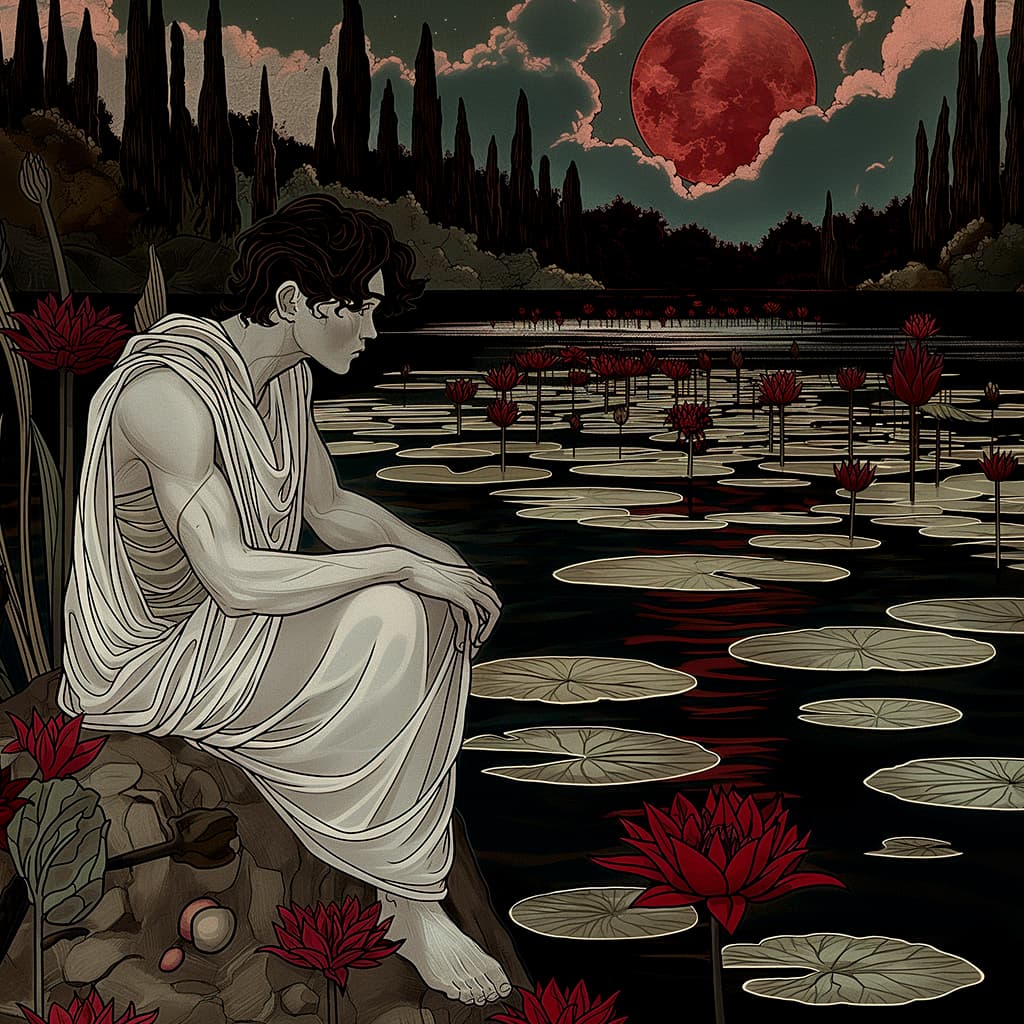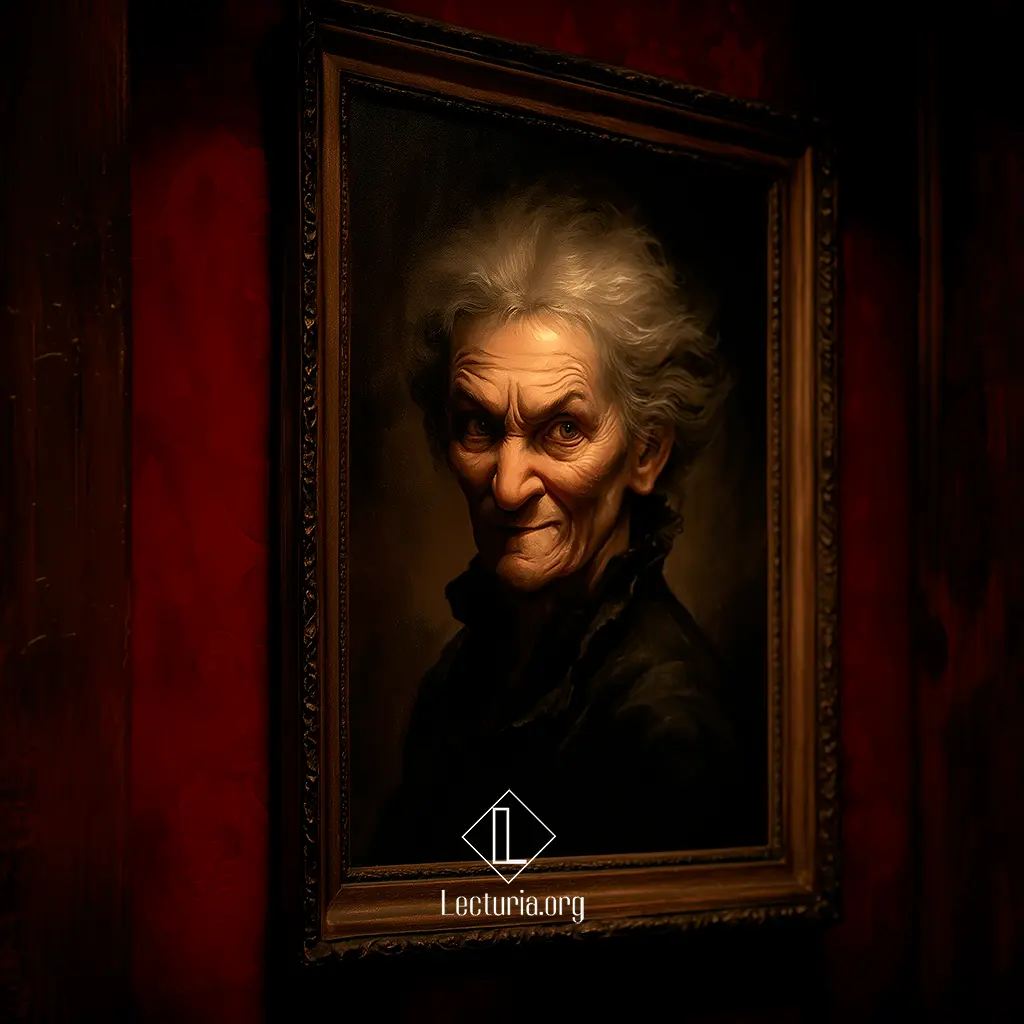Edgar Allan Poe: Silence—A Fable
In “Silence” (Silence—A Fable), a short story by Edgar Allan Poe published in 1838 in Baltimore Book, a demon tells a story about a desolate region in Libya near the Zaire River. A disturbing landscape marks this land: a sickly river, gigantic water lilies, and a dark and turbulent jungle, all without calm or silence. One night, under a rain that turns to blood, the demon observes a majestic man on a rock. This man, lonely and melancholic, contemplates the desolate landscape. The demon invokes the elements to torment him, but nothing seems to move this man, who is tired of people and eager to be alone.





